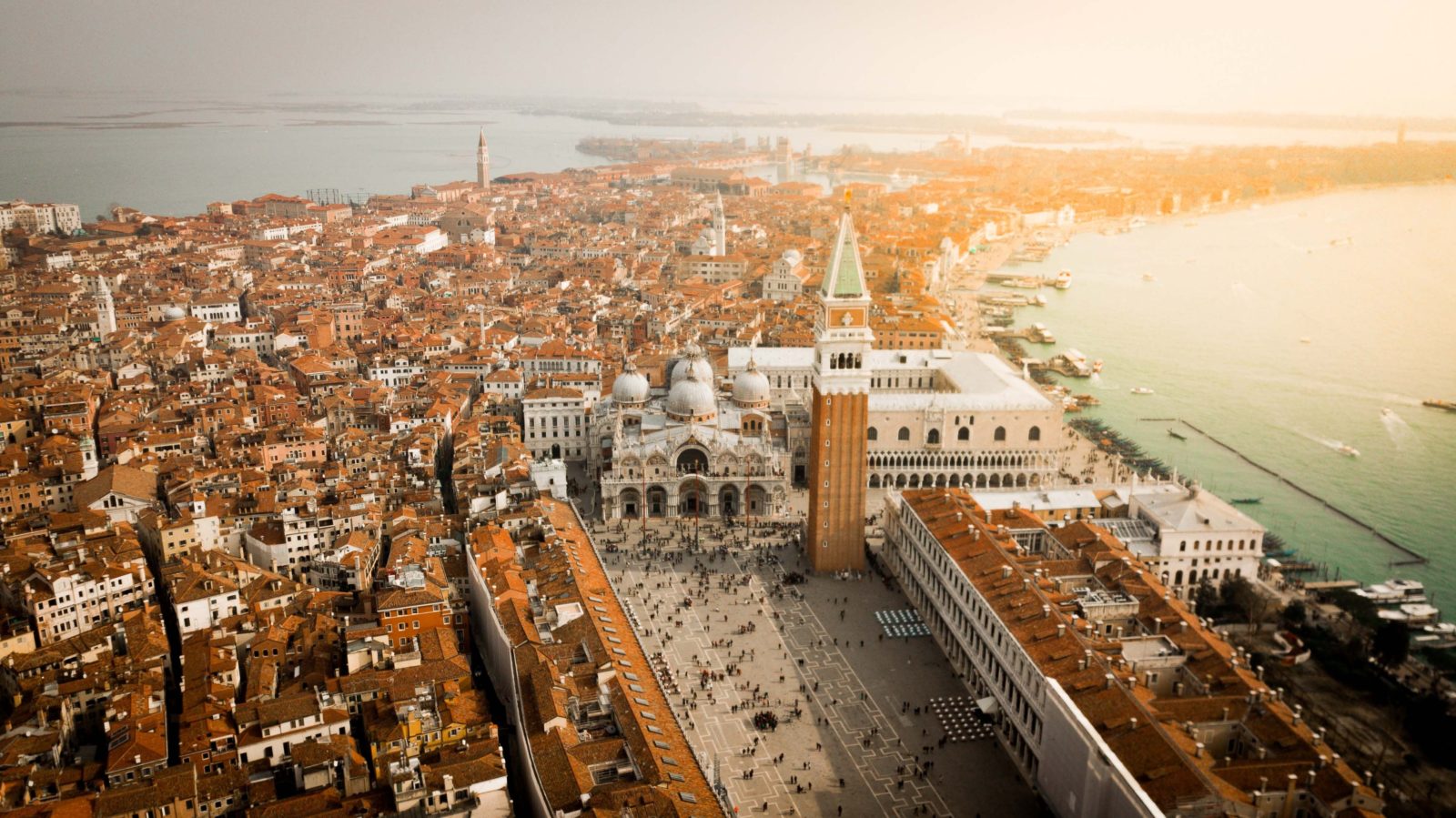Book Review:
If Venice Dies, Salvatore Settis, translated by André Naffis-Sahely
(New Vessel Press, 2015)
Death in venice
Settis frames the city’s decline—and forgos environmental solutions

Salvatore Settis titles his book smartly. The phrase if Venice dies is a provocative “or else” that urges us to pick up the volume and consider Venice’s fate. The title also gives the city a humanity—a soul, made up of its community, Settis later posits—that makes its survival seem that much more essential. More a threat than a what-if, If Venice Dies asks its readers: How could we let this happen to Venice? How do we stop it?
The book is probably preaching to the preservation choir. For a preservationist, If Venice Dies is reinforcing, if a little traditional in some of its points.
My favorite example illustrating historic Italian cities as being at odds with modernity is Milan, where “the statue of the Virgin Mary known as the Madonnina atop the [Duomo] cathedral once marked the maximum height a building could aspire to.” Beginning in the mid-20th century, towers began to rise in the city. To justify their heights and still maintain the tradition of the Madonnina, a replica of the statue was placed on top of each new tower. Settis dismisses this as “completely alien to the historic city’s DNA,” while I found it a charming practice borne out of the city’s built heritage (that should, to be fair, be hedged by some height-restriction legislation).
Even though Settis bemoans some contemporary practices in Italy, he advocates for a living Venice, rather than a museum-ified one. If Venice Dies is criticism, telling us why and how Venice is dying, rather than speculating on what will happen once Venice is destroyed. Settis sees Venice eroding against the forces of modernity (manifested in insensitive skyscrapers and growing megalopolises), globalization (the increasing homogenization of our cities), and mindless tourism, and believes something must be done.
The book assumes that the reader knows Venice and knows why it should not die. (Full disclosure: I have never been to Venice and know little about it but still hope for its survival.) Settis does not spend time making Venice’s case; rather, he assumes that the reader is on his side and sets out a framework of binaries to illustrate Venice’s decline: citizen-tourist; use value-exchange value; historic city-megalopolis; soul-body; creating-copying; etc.

Photo by Candré Mandawe on Unsplash
Interestingly, considering the role of water in Venice and Settis’s natural-cultural binary, he spends little time addressing the environmental impacts to come. (When shopping for this book, I mistakenly retitled it If Venice Sinks, imagining that sea-level rise would play a greater role.)
Although his criticism is well founded and convincing, I wish that Settis had spent more time speculating on the death of Venice and what might follow—or, better yet, proposing solutions to prevent it. Early on in the book, he argues that “even non-Venetians . . . must become part of that city’s people, become the custodians of its beauty and memory and devote ourselves to nurturing its future.” That’s a difficult charge for outsiders—especially considering that concerned urbanists will have their own dying cities to care for.
Still, he develops a few useful concepts (not quite solutions or executable actions) that might be understood as three needs: the need for better architects; the need for better politicians and governance; and the need for better citizens.
For better architects (where “better” means “more culturally sensitive”), Settis advocates for a Vitruvian Oath: “every single one of the professional requirements that Vitruvius lists in his book [compiled] into the perfect equivalent of the Hippocratic Oath” with a foundation in history, to be taken by every designer working in Italy.
For better politicians and governance, Settis implies the prioritization of citizens and work over developers and tourism, the living city over the museum city, use value over exchange value. (He does not explicitly state this but does speak critically of Italian legislation throughout the book.)
For better citizens, a citizenship pact. Based on Socrates’s notions of citizenship, the pact would make the citizen (resident) responsible for the survival of the city and responsible for the community. He introduces the phrase “if Venice dies” early in the book, claiming that “it won’t be at the hands of a cruel enemy, or a conqueror’s intrusion. It will be because it has forgotten its own identity.” Without living, working, and remembering citizens, a city has no soul.
Through these three channels, Settis believes, Venetians and non-Venetians might be able to steward the city on to the next generation. To be safe, though, I’ll be looking into booking travel to Venice. I would like to see it before it’s dead.

Carbon Cure
Building a low-carbon future: Reducing embodied carbon in the built environment
